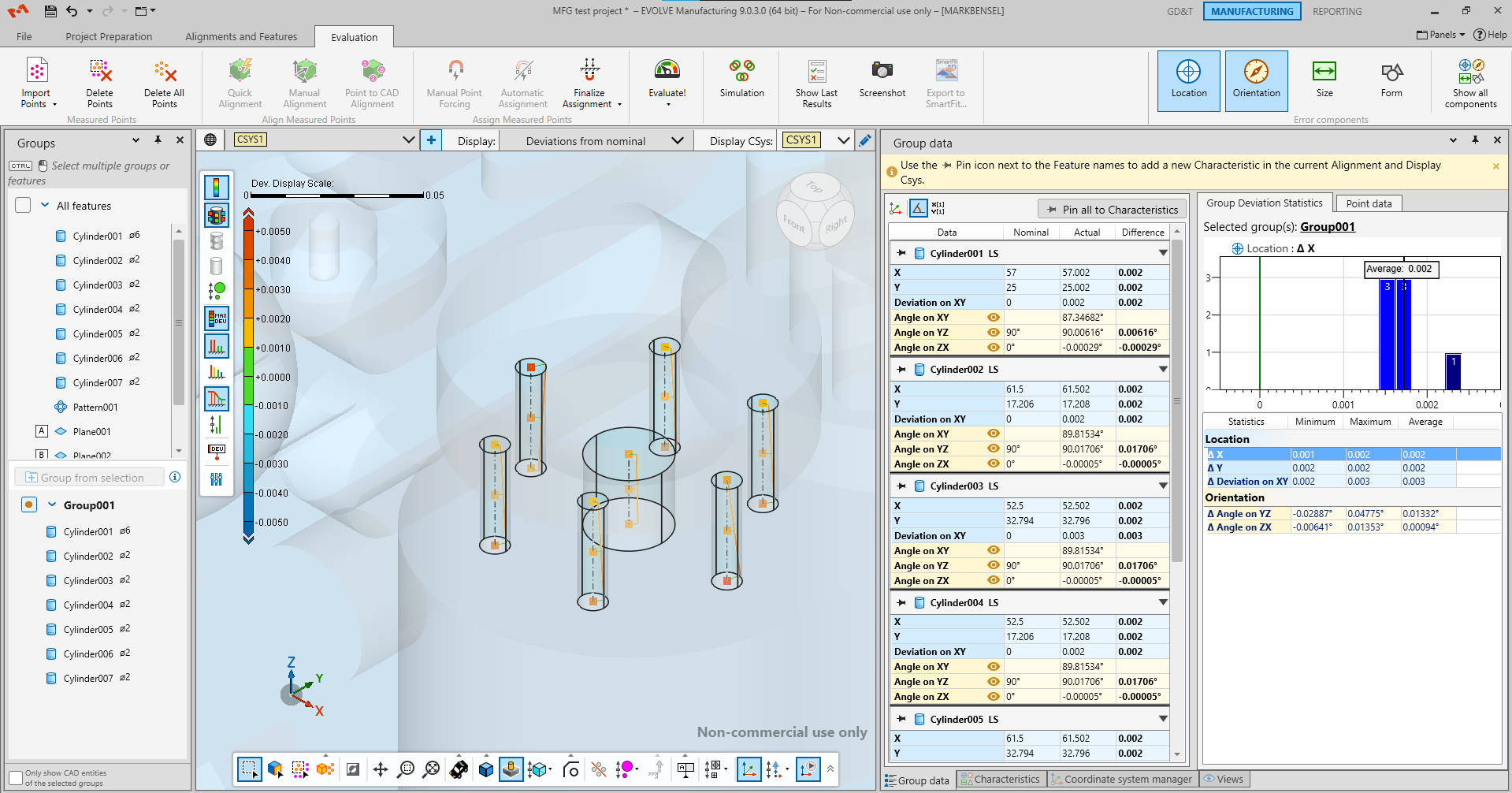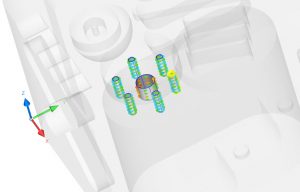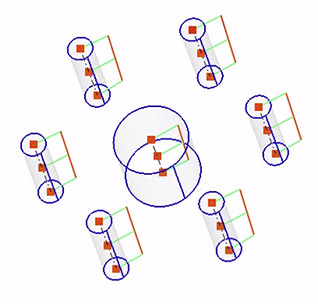EVOLVE Manufacturing
GD&T and Functionality
Using GD&T in the manufacturing process provides inherent benefits, but modern manufacturers realize that a GD&T design drawing is not enough.
GD&T requirements target the combined effects of numerous factors – size, location, orientation, etc. Efficient manufacturing analysis requires separation of individual factors. There are fundamental differences between “evaluation of measurements to ensure function” and “evaluation of measurements to provide direct feedback to manufacturing.” These differences involve the datums used, coordinate systems vs. DRFs, the mathematical algorithms used, how the results are presented – to mention a few.

EVOLVE Manufacturing Represents Both GD&T and Functionality
EVOLVE Manufacturing graphically compares measured results based on design or manufacturing datums producing proper manufacturing adjustments and how they impact GD&T tolerances. Understand why a part failed during the GD&T evaluation and which corrective actions can fix the manufacturing process.
Evolve Manufacturing is a powerful and unique 2D/3D tool which uses the same measurement point cloud data as the GD&T evaluation. This allows correlation of the GD&T results to feature deviations displayed in the manufacturing coordinate systems.
Grouping of Features

EVOLVE Manufacturing groups part features to help identify possible manufacturing issues.
The groups are determined by different manufacturing operations, tools or alignments.
Alignments

Manufacturing alignments simulate real manufacturing processes. Features and groups are evaluated in their manufacturing alignments, not their design alignments.
Error Components

Point deviations are separated into 4 error categories — location , orientation , size and form . These categories can be used individually, together or all at once.
Corrective Action Analysis
Powerful “What-if” simulations based on observed deviations allow immediate prediction of the effects of applied manufacturing corrections on the GD&T results.

 EVOLVE Manufacturing
EVOLVE Manufacturing 




